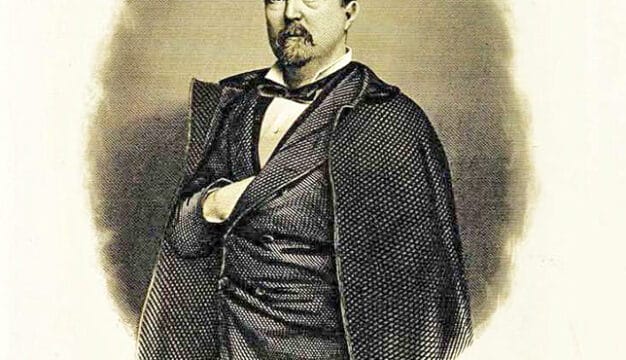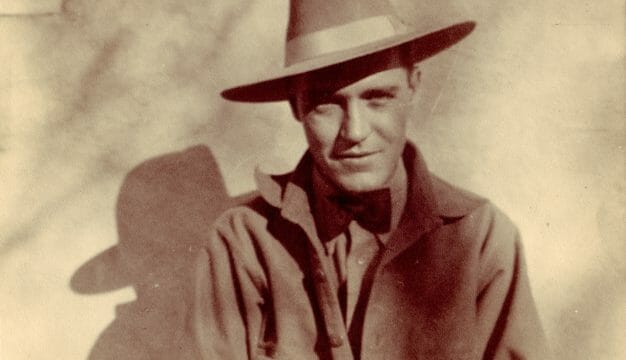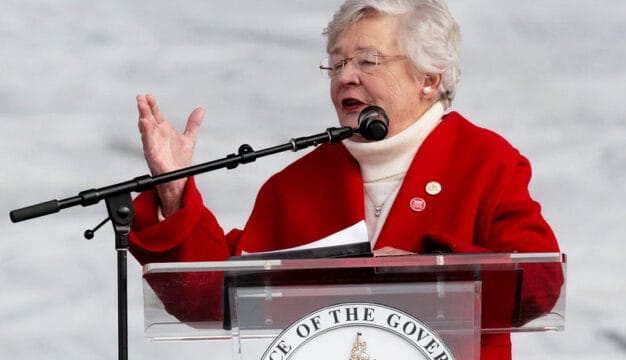Lowndes Interpretive Center
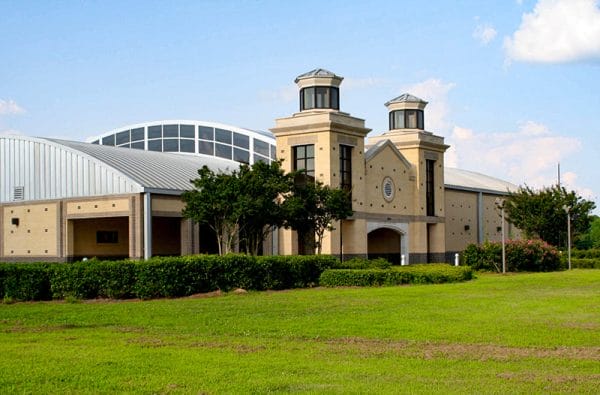 Lowndes Interpretive Center Building
The Lowndes Interpretive Center in White Hall, Lowndes County, commemorates historical events associated with the 1965 voting rights marches from Selma, Dallas County, to Montgomery, Montgomery County. The center highlights Bloody Sunday and the passage of the Voting Rights Act of 1965 as well as events that specifically occurred in Lowndes County. The Interpretive Center was established by the National Park Service in 2006 as part of the Selma to Montgomery National Historic Trail with the support of the Alabama Department of Transportation and the Federal Highway Administration.
Lowndes Interpretive Center Building
The Lowndes Interpretive Center in White Hall, Lowndes County, commemorates historical events associated with the 1965 voting rights marches from Selma, Dallas County, to Montgomery, Montgomery County. The center highlights Bloody Sunday and the passage of the Voting Rights Act of 1965 as well as events that specifically occurred in Lowndes County. The Interpretive Center was established by the National Park Service in 2006 as part of the Selma to Montgomery National Historic Trail with the support of the Alabama Department of Transportation and the Federal Highway Administration.
The interpretive center was constructed on U.S. 80 West at the site of “Tent City,” a settlement established on property owned by the Lowndes County Christian Movement for Lowndes County sharecroppers and tenant farmers forced off their land for attempting to register to vote. Tent cities were established in other southern states as well for similar reasons. This “city” consisted of tents, cots, heaters, food, and water provided by the Student Nonviolent Coordinating Committee (SNCC) and local civil rights activists to offer the displaced sharecroppers comfort while they looked for new housing and employment.
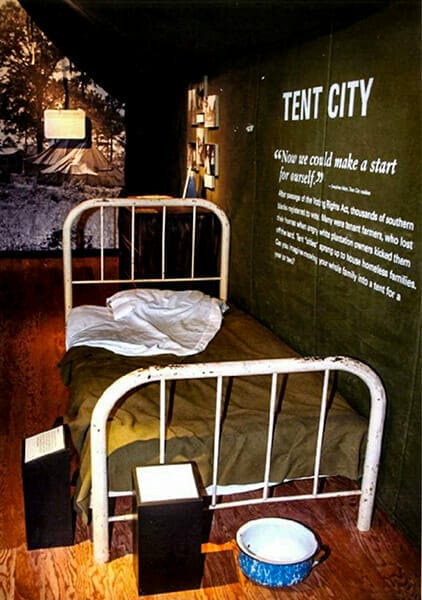 Tent City Exhibit
The center contains a museum with interactive exhibits that incorporate multi-media elements featuring news footage, photographs, and interviews from civil right activists who participated in the marches. These exhibits tell the story of the importance of voting rights, starting with emancipation and the later disenfranchisement of African American citizens. They also chronicle sharecropper way of life for African Americans in Lowndes County, with a replica country store and tenant house. The center also highlights how African Americans were denied access to voting because of Jim Crow laws and societal structures. There were virtually no African Americans registered to vote in Lowndes and neighboring Wilcox County and only a very small percentage in Dallas County. This exclusion acted as the impetus for civil rights organizations such as SNCC to travel to the Alabama Black Belt and hold voter registration drives. The interpretive center also features a replica of Tent City, which housed those sharecroppers displaced by their white landlords for registering to vote.
Tent City Exhibit
The center contains a museum with interactive exhibits that incorporate multi-media elements featuring news footage, photographs, and interviews from civil right activists who participated in the marches. These exhibits tell the story of the importance of voting rights, starting with emancipation and the later disenfranchisement of African American citizens. They also chronicle sharecropper way of life for African Americans in Lowndes County, with a replica country store and tenant house. The center also highlights how African Americans were denied access to voting because of Jim Crow laws and societal structures. There were virtually no African Americans registered to vote in Lowndes and neighboring Wilcox County and only a very small percentage in Dallas County. This exclusion acted as the impetus for civil rights organizations such as SNCC to travel to the Alabama Black Belt and hold voter registration drives. The interpretive center also features a replica of Tent City, which housed those sharecroppers displaced by their white landlords for registering to vote.
 Selma to Montgomery March Exhibit
The center is located about one-third the way along the 54-mile Selma to Montgomery National Historic Trail that was created by an act of Congress in 1996 to preserve and interpret the events surrounding the passage of the Voting Rights Act of 1965. The trail begins in Selma at the Brown Chapel AME Church, where civil rights activists gathered on the morning of Sunday March 7, 1965, for the first attempted march to Montgomery. It passes the NPS Selma Interpretive Center, heads east on U.S. 80 East, crosses the Edmund Pettus Bridge, and travels by the National Voting Rights Museum and Institute on the east side of the Alabama River. It later passes by the Lowndes Interpretive Center, campsites used by marchers, and the Viola Liuzzo Memorial, which honors the Michigan woman who was murdered by Ku Klux Klan members for participating in the march. After passing by another campsite at the City of St. Jude hospital, the trail ends in Montgomery at the Alabama State Capitol, just past the Dexter Avenue King Memorial Baptist Church. The trail will include another NPS interpretive center to be in Montgomery on the Alabama State University campus.
Selma to Montgomery March Exhibit
The center is located about one-third the way along the 54-mile Selma to Montgomery National Historic Trail that was created by an act of Congress in 1996 to preserve and interpret the events surrounding the passage of the Voting Rights Act of 1965. The trail begins in Selma at the Brown Chapel AME Church, where civil rights activists gathered on the morning of Sunday March 7, 1965, for the first attempted march to Montgomery. It passes the NPS Selma Interpretive Center, heads east on U.S. 80 East, crosses the Edmund Pettus Bridge, and travels by the National Voting Rights Museum and Institute on the east side of the Alabama River. It later passes by the Lowndes Interpretive Center, campsites used by marchers, and the Viola Liuzzo Memorial, which honors the Michigan woman who was murdered by Ku Klux Klan members for participating in the march. After passing by another campsite at the City of St. Jude hospital, the trail ends in Montgomery at the Alabama State Capitol, just past the Dexter Avenue King Memorial Baptist Church. The trail will include another NPS interpretive center to be in Montgomery on the Alabama State University campus.
The Lowndes Interpretive Center is open Monday through Saturday from 9:00 a.m. to 4:30 p.m. except during Thanksgiving, Christmas Day, and New Year’s Day. The center is located on 7002 U.S. Highway 80 West. Admission is free.
